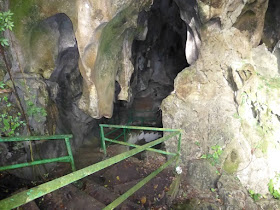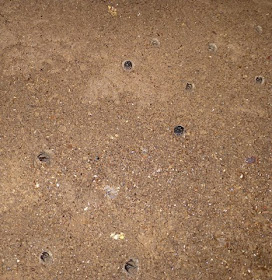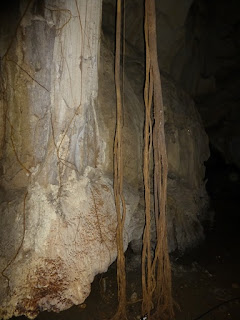There are 5 species groups of Liphistius in peninsular Malaysia : the trang group, the malayanus-group, the batuensis-group, the tioman-group and the linang-group. L. priceae sp. nov. belongs to the linang-group.
The specimens were collected by Dr Peter Schwendinger. They are known only from two caves in the
same limestone hill at Dabong in Kelantan - Gua Keris and Gua Pagar. None were found in the associated rain forest so they may be confined to caves, although show no noteworthy cave adaptations.
Unfortunately there are no photo of the live specimens, only those in alcohol -
Extracts from the paper :
(Location):
Malaysia, Kelantan, about 5 km
S of Dabong, Gua Keris (= Kris Cave) and Gua Pagar
(locally also called Gua King Kong), 130 m; 8.-9.
VI.2004; leg. P.J. Schwendinger. The precise type
locality is Gua Keris.
Etymology:
The new species is named in honour of
Liz Price (London, UK), a former long-time resident
in Kuala Lumpur, and a very active speleologist who
over 30 years explored and published on caves and cave
faunas all over Southeast Asia. She was also involved
in conservation and trying to save some caves from
destruction by quarrying in Malaysia.
Diagnosis:
Small to medium-sized, light-brown coloured
species, similar and closely related to
L. tempurung. Both sexes slightly smaller than those
of L. tempurung.
This is the second specimen to have been named after me. The first was a snail from Laos, called Sinoennea lizae .
A big thank you to Peter Schwendinger for honouring me with this cave spider.
















































































